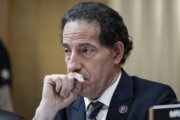Every investor’s story starts somewhere.
Who can forget when love first entered our lives? That first kiss, that first date — and, of course, that first investment? It’s true that money can’t buy you love. Then again, the guy who penned that sentiment — ex-Beatle Paul McCartney — is worth an estimated $660 million, a fortune he made not just writing songs but also investing in them. Few would-be moguls have fared so well — and sometimes, investment has all the joy of a sad breakup tune. Regardless, that first investment can spark a lifelong passion. Here, we share stories of first steps, giddy or gullible, from Main Street to Wall Street and beyond.
The sandwich years
“In 1976-’77, when I was 12, I bought about $60 of Fireball candy and Bubble Yum wholesale and began selling it retail in school,” says Leslie Bocskor, founder and managing partner of Electrum Partners in Las Vegas. “At the same time, I was making my own sandwiches and bringing them to school. Everybody asked to try them and shortly after asked if they could buy them. So I invested in the fixings, began taking orders and started selling sandwiches. The school did establish a regulatory framework that removed profitability from the venture. But it was my first venture, and it was successful: I didn’t eat all my own profits.”
Not in the cards
“At age 12, I bought 100 shares of the Topps trading card company for $1,500, using money from my college fund,” says Bart Lorang, co-founder and CEO of FullContact. “I was a huge baseball fan. I was always actively trading cards and even selling baseball cards out of the fort I had built near my home in Montana.
“Topps was about to announce the Topps Stadium Club, and I thought it was going to be a big winner in the market. I diligently checked the stock price each day. It really didn’t move much. It disappointed me a ton, and I eventually sold my shares for a loss of about $100, if memory serves. I learned that it’s not about a product’s hype. It’s about the financial performance of the company. During that period, I never once checked out a financial report on Topps.”
But you can’t buy shares at Costco.
“My first investment was at the age of 13; I’m 17 now,” says Josh Seides, serial entrepreneur and founder of the nonprofit Technocademy.org. “It was three shares of Costco, which I still own. The per-share price was $68, and now it’s hovering around $140. I honestly picked the Costco stock because I knew I wanted to pick a store I went to a lot, so it was either that or GameStop. I actually ended up with Costco because I liked the way the symbol sounded — COST — and I was in Costco when I made the decision to purchase stocks.”
There’s the beef.
“I was in my mid-20s and just out of college in 1987 when I bought Wendy’s stock,” says Rick Scott, assistant professor of finance at Saint Leo University in Saint Leo, Florida. “I invested a few hundred dollars I had saved up — pretty much all of my savings outside of my 401(k) retirement fund. I picked it because the market had just crashed, and I had read ‘buy low and sell high.’ But I’d also read an article on Wendy’s coming out with a new food bar to pump up sales and I liked to eat, so I thought it would be successful.
“Looking back, I realize a big reason I wanted to buy my first stock was so I could say I had a stockbroker. I was a young, single guy, and that seemed like a cool thing to work into a conversation with a young lady. I don’t remember anyone, male or female, being impressed. The food bar was not successful but Wendy’s was fine. I sold my investment a few months later for about a 20 percent gain.”
Going for broker.
“I worked the summer before my freshman year of college as a clerk at a local convenience store until I had an extra $1,000 burning a hole in my pocket,” says Scott Goble, managing partner of Sound Accounting in Chattanooga, Tennessee. “My parents received an invitation in the mail to attend a seminar presented by a local stockbroker; they had no interest, so I decided to take their place. … And I was sold!
“The next day I made an appointment to meet with the broker and hand over $1,000 — the largest check of my life to date. But when I stepped into the broker’s office, everyone looked at me as if I had stepped out of a flying saucer. … I doubt my life would have been much different had I not lost more than $200 in my first venture into the markets. My $200 loss has, however, made a big difference in the lives of my clients. I know what it means to be made to feel small, and I never want that to happen to anyone who seeks my advice.”
No so much fund.
“It was in 1982 when I was 25. I used $18,000 from my grandmother to buy Fidelity Magellan — it was known as the best mutual fund at the time, and my mom approved,” says Ken Moraif, founder and senior advisor at Money Matters in Dallas. “It did very well until 1987, when the crash came. I decided then that I did not like losing money in bear markets. I adopted my buy, hold and sell philosophy, and it’s now the guiding philosophy of our financial advisory firm. That bear market changed my life.”
Mind the Gap.
“I started investing when I was 11. I’d saved a few hundred dollars from mowing lawns, and got straight-A’s in school that quarter, so my parents gave me $100,” says Michael B. McDonald, assistant professor of finance at Fairfield University in Fairfield, Connecticut. “I went and bought 20 shares in Gap. I liked Gap because all the kids at school wore their clothes, and it was a business I could understand. My parents helped me set up a custodial account with their broker.
“Gap went up a couple dollars in the month after I bought the stock, and I couldn’t believe I had made almost $50 so easily. I became fascinated with the stock market, investing every penny I earned mowing lawns and working after school throughout high school and the dot-com bubble. Those were heady and volatile days — and as good as the run-up was in stocks in the late 1990s, the tech bubble bursting was equally bad. The lesson I took from this was that stocks go up and they go down.”
The Force was with him.
“As a senior in high school, I heard an acquaintance talk about the fact that his father had taken out a second mortgage on his house to purchase shares of 20th Century Fox (now 21st Century Fox),” says Bennett Gross, investment strategist with EP Wealth Advisors. “His father was a television executive, and that piqued my interest. Why would anyone take out a second mortgage on their home to buy a stock? Fox was going to release a new science-fiction fantasy movie, and the buzz among the industry was that the movie would do very well.
“I got my father to help me open a stock account — I was still not 18 — and put all my savings in that account. It was a little under $1,000: funds I had earned washing windows, which paid far better than my other job at Thrifty Drug Stores. I purchased 100 shares of 20th Century Fox at about $800, not including commissions, which were prohibitively high in those years. The movie that attracted all the buzz was, of course, ‘Star Wars,’ and it was a gigantic hit. I sold half of my shares when the price had doubled, and I sold the remaining shares at a triple. I made about $1,200.”
More from U.S. News
7 Bad Investing Habits That Are Holding You Back
10 Ways to Build a $1 Million Nest Egg
8 Hacks to Ease Your Financial Life
8 Inaugural Trips Down Wall Street originally appeared on usnews.com







